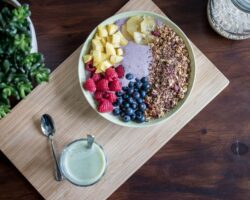Introduction: Embracing the Season
Winter Workouts – Get Out There!
As the winter season sets in, many of us tend to hibernate indoors, cuddled up under blankets and sipping hot cocoa. However, embracing the season and staying active can have numerous benefits for our physical and mental well-being. In this article, we will explore the world of winter workouts and provide you with a comprehensive guide to make the most of this chilly time of year.
Benefits of Winter Workouts
Snowy trails and crisp air –
One of the biggest advantages of winter workouts is the picturesque scenery that surrounds us. Whether you’re hiking through snow-covered forests or skiing down slopes, the beauty of the winter landscape can elevate your workout experience and provide a refreshing change of scenery.
Boost your immune system –
Engaging in physical activity during the winter months can help boost your immune system, making you less susceptible to common colds and illnesses. Regular exercise has been shown to strengthen the body’s defense mechanisms, keeping you healthier and more resilient throughout the season.
Safety Tips for Exercising in Cold Weather
Layer up for warmth –
When venturing out for a winter workout, it’s essential to dress appropriately to stay warm and comfortable. Layering your clothing not only provides insulation but also allows you to regulate your body temperature as you warm up during exercise. Start with a moisture-wicking base layer, add an insulating middle layer, and top it off with a windproof and waterproof outer layer.
Protect your extremities –
Don’t forget to protect your extremities! Wearing gloves, hats, and warm socks can help prevent frostbite and keep you comfortable during your workout. Additionally, consider investing in thermal socks and hand warmers for extra warmth and insulation.
Outdoor Winter Activities to Stay Active
Skiing or snowboarding –
Hit the slopes and enjoy the adrenaline rush of skiing or snowboarding. These winter sports not only provide a full-body workout but also allow you to immerse yourself in the thrill of speed and agility.
Snowshoeing –
Strap on a pair of snowshoes and explore the winter wonderland on foot. Snowshoeing is a low-impact activity that engages multiple muscle groups and offers a great cardiovascular workout while enjoying the tranquility of nature.
Indoor Workout Ideas for Cold Days
Indoor cycling –
When the weather outside is frightful, hop on a stationary bike and pedal your way to fitness. Indoor cycling classes or virtual cycling workouts are an excellent way to get your heart pumping and burn calories without braving the cold temperatures.
Yoga or Pilates –
Winter is an ideal time to focus on flexibility and strength training. Join a yoga or Pilates class to improve your balance, core stability, and overall body strength. These low-impact workouts can be done in the comfort of your home or at a local studio.
Gear and Clothing Recommendations for Winter Workouts
Insulated and waterproof footwear –
Investing in insulated and waterproof footwear is essential for winter workouts. Look for shoes or boots with good traction to prevent slips and falls on icy surfaces. Additionally, consider using gaiters to keep snow out of your shoes and socks.
Moisture-wicking base layers –
Choose base layers made of moisture-wicking materials such as merino wool or synthetic fabrics. These fabrics will keep you dry by wicking away sweat, preventing you from feeling cold and clammy during your workout.
Preparing for Winter Workouts: Warm-up and Stretching
Dynamic warm-up exercises –
Before diving into your winter workout, it’s crucial to warm up your muscles and joints to prevent injuries. Incorporate dynamic warm-up exercises such as jumping jacks, high knees, and arm circles to increase blood flow and prepare your body for the activity ahead.
Stretching for flexibility –
After your warm-up, don’t forget to stretch your muscles to improve flexibility and prevent muscle soreness. Focus on stretching major muscle groups such as your calves, thighs, and shoulders. Hold each stretch for at least 30 seconds and remember to breathe deeply.
Nutrition Tips for Fueling Winter Workouts
Stay hydrated –
Even though the temperatures may be cooler, it’s still important to stay hydrated during your winter workouts. Dehydration can still occur, especially if you’re engaging in intense physical activity. Drink water before, during, and after your workout to replenish fluids lost through sweat.
Include warming foods –
During the winter season, incorporating warming foods into your diet can provide comfort and fuel for your workouts. Opt for nourishing soups, stews, and dishes rich in complex carbohydrates, lean proteins, and healthy fats to keep you energized and satisfied.
Motivation and Mental Health During the Winter Season
Find a workout buddy –
Staying motivated during the winter season can be challenging, so why not find a workout buddy to keep you accountable? Exercising with a friend or joining a group fitness class can provide social interaction and make your workouts more enjoyable.
Embrace variety –
Keep your workouts exciting and varied to prevent boredom. Try different winter activities such as ice skating, cross-country skiing, or even building a snowman. Mixing up your routine will help you stay engaged and motivated throughout the season.
Conclusion: Making the Most of Winter Workouts
Winter doesn’t have to be a season of hibernation and inactivity.
By embracing the season and incorporating winter workouts into your routine, you can enjoy the beauty of the snow-covered landscapes while reaping the physical and mental health benefits. Whether you choose outdoor activities or prefer to stay warm indoors, make the most of this time of year and keep your body and mind active!
Get out there and embrace the winter!










